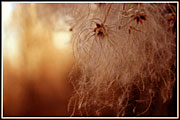From cotton to clothes - the process
The process for the creation of cotton into clothing is a simple one that all beings with the wondrous cotton plant. The cotton ball that the plant produces is the end result of the flower of the cotton plant. Once the flower dies and falls off, all that is left are the cotton bolls and the seeds. This is what is harvested around the world. The planting of cotton occurs in warm climates on every continent in the world except Antarctica.
cotton plant. The cotton ball that the plant produces is the end result of the flower of the cotton plant. Once the flower dies and falls off, all that is left are the cotton bolls and the seeds. This is what is harvested around the world. The planting of cotton occurs in warm climates on every continent in the world except Antarctica.
The harvesting of the cotton boll can be done by hand or by mechanical means. Today most of it is still handpicked. The next step is the separation of the cotton fibers from the seeds and the pods in a cotton gin. The cotton gin combs the cotton fibers until only the lint is left. This lint is then collected and compressed to make bales which weigh about 500 pounds each. Each bale is professionally assessed to determine the length, color and cleanliness of the cotton.
The bales of cotton are then sold to textile mills. This is the place that the loose cotton fibers are sorted by their length. Only the longer fibers are suitable for spinning into thread. The shorter fibers are separated out and sent to other industries for use in paper products along with many other uses. The longer fibers are again combed. This aligns them into a sliver which is then spun into thread.
Once the cotton is made into threads, it can proceed to the dying process or bleaching process for white thread. Once the threads are dry they can move to the looms. It is the looms where the actual fabric made of cotton is created. In the looms the threads are placed vertically which are referred to as warps. The horizontal threads are called weft. The wefts are connected to a bobbin and held in the shuttle of the loom. With each pass of the bobbin a new layer of thread is pressed downward against the previous one. The weft threads are alternatively shifted with each pass of the bobbin and with this action repeated many times a fabric is created.
To create different types of weaves, the waft threads are lifted and lowered in different but precise patterns. Each sequence is made for a particular type of weave. The variations in weaves are also accomplished by the pattern that is followed, the tightness the threads and the number of threads per inch in the fabric.
Once the fabric is made it can then be sent the factories that create the many different types of garments. This is where the fabric is cut and sewn together to make the shirts, pants and other clothing items that people wear today. This finishing of the clothing items is done mostly by hand. Then the cloths are packaged up and sent to the stores or outlets for the consumer to purchase.
